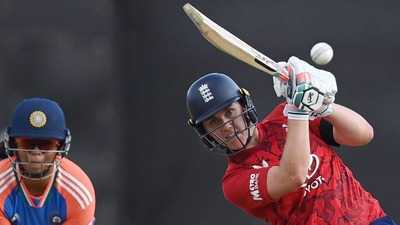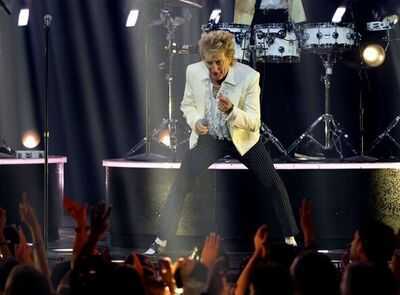For his epic win over Jannik Sinner in the French Open final earlier this month, Carlos Alcaraz credited '3Cs' his grandfather taught him - cabeza, corazon, and cojones - translated respectively as head, heart, and balls (bravery). During the post-match interview, an interviewer from Eurosport nervously translated the third C as 'guts', before Alcaraz confidently committed to the actual word and owned it as a key factor in his stellar victory.
Names of parts of the male and female reproductive anatomy have been used as slang for courage and cowardice for ages. Historically, courage was most associated with battles, warfare, and physical confrontation. These days, however, the fight is about overcoming adverse circumstances with determination and resilience - more mental attributes than physical, as Alcaraz also demonstrated.
So, courage now often involves evaluating scenarios that entail emotional risks more than physical ones. Neuroscience and biology have shed light on mechanisms behind such decisions, and they point away from simplistic correlations between human anatomy and courage.
Even as the narrative of courage shifted away from physical acts, the link to manliness remained, due to testosterone's association with aggression and behaviour correlating with risk-taking and bravado. But this link has now been shown to be only a correlation. Testosterone does not directly cause aggressive, confident, or risk-taking behaviour. Its role is more nuanced.
This nuance, and other fascinating details about the complexity of biological processes that drive human behaviour, are explained by neuroscientist and primatologist Robert M Sapolsky in his two books, Behave: The Biology of Humans at Our Best and Worst, and Determined: A Science of Life Without Free Will.
Testosterone promotes aggressive behaviour in situations where the individual is predisposed to aggression. For example, in primates, a testosterone increase makes a male monkey aggressive only towards lower-ranking monkeys. If the other is superior, the predisposition is not to be aggressive.
A parallel in the human setting would be different predispositions towards individuals of different 'status'. If testosterone truly drove aggression, then higher testosterone levels would lead to greater aggression in all instances. However, higher hormone levels (within the normal range) do not predict higher aggression in humans.
Furthermore, aggression is displayed not just for the sake of being aggressive. The reason for aggression is often to protect status. A perceived threat to status results in a display of aggression - because societal norms have conditioned us to respond to such threats with aggression. In a hypothetical society that valued harmony, testosterone levels would instead correlate with generosity (as also demonstrated in experimental settings).
Additional evidence weakens the link between testosterone and courage. Multiple neuronal circuits govern decision-making and subsequent behaviour in addition to hormone levels. A primary player is the prefrontal cortex (PFC) - the part of the brain responsible for impulse control. PFC evaluates any testosterone-driven impulse to determine cost and benefit of the action. This evaluation is influenced by levels of other hormones such as oxytocin and cortisol. Oxytocin can dampen the impulse-driven response, whereas cortisol can amplify it.
The picture that emerges is that even though testosterone promotes aggression - with the caveats above - it never causes the behaviour on its own. The individual's decision-making depends on levels of other hormones that can inhibit or amplify testosterone-related impulses.
All these hormone levels are shaped by the individual's environment in the hours prior, as well as by their predisposition to specific environmental triggers. Thus, the same person can make different decisions (courageous or cowardly) in different environments.
This rich variability in a single individual's actions and decisions due to hormonal fluctuations is only the tip of the behavioural iceberg. At the population level, additional factors become relevant. It starts with genetics. Then, the environment in the womb (such as the mother's stress levels during pregnancy) has an impact. Post birth, the cumulative influence of environmental stressors and the individual's coping responses help shape the 'set-point' for the balance between PFC and other impulse-driven circuits.
The seat of courage or cowardice, fearlessness or pusillanimity (no etymological link to the slang used for cowardice), certainly does not lie below the waist.
The writer is MD, Resonance Laboratories, Bengaluru
Names of parts of the male and female reproductive anatomy have been used as slang for courage and cowardice for ages. Historically, courage was most associated with battles, warfare, and physical confrontation. These days, however, the fight is about overcoming adverse circumstances with determination and resilience - more mental attributes than physical, as Alcaraz also demonstrated.
So, courage now often involves evaluating scenarios that entail emotional risks more than physical ones. Neuroscience and biology have shed light on mechanisms behind such decisions, and they point away from simplistic correlations between human anatomy and courage.
Even as the narrative of courage shifted away from physical acts, the link to manliness remained, due to testosterone's association with aggression and behaviour correlating with risk-taking and bravado. But this link has now been shown to be only a correlation. Testosterone does not directly cause aggressive, confident, or risk-taking behaviour. Its role is more nuanced.
This nuance, and other fascinating details about the complexity of biological processes that drive human behaviour, are explained by neuroscientist and primatologist Robert M Sapolsky in his two books, Behave: The Biology of Humans at Our Best and Worst, and Determined: A Science of Life Without Free Will.
Testosterone promotes aggressive behaviour in situations where the individual is predisposed to aggression. For example, in primates, a testosterone increase makes a male monkey aggressive only towards lower-ranking monkeys. If the other is superior, the predisposition is not to be aggressive.
A parallel in the human setting would be different predispositions towards individuals of different 'status'. If testosterone truly drove aggression, then higher testosterone levels would lead to greater aggression in all instances. However, higher hormone levels (within the normal range) do not predict higher aggression in humans.
Furthermore, aggression is displayed not just for the sake of being aggressive. The reason for aggression is often to protect status. A perceived threat to status results in a display of aggression - because societal norms have conditioned us to respond to such threats with aggression. In a hypothetical society that valued harmony, testosterone levels would instead correlate with generosity (as also demonstrated in experimental settings).
Additional evidence weakens the link between testosterone and courage. Multiple neuronal circuits govern decision-making and subsequent behaviour in addition to hormone levels. A primary player is the prefrontal cortex (PFC) - the part of the brain responsible for impulse control. PFC evaluates any testosterone-driven impulse to determine cost and benefit of the action. This evaluation is influenced by levels of other hormones such as oxytocin and cortisol. Oxytocin can dampen the impulse-driven response, whereas cortisol can amplify it.
The picture that emerges is that even though testosterone promotes aggression - with the caveats above - it never causes the behaviour on its own. The individual's decision-making depends on levels of other hormones that can inhibit or amplify testosterone-related impulses.
All these hormone levels are shaped by the individual's environment in the hours prior, as well as by their predisposition to specific environmental triggers. Thus, the same person can make different decisions (courageous or cowardly) in different environments.
This rich variability in a single individual's actions and decisions due to hormonal fluctuations is only the tip of the behavioural iceberg. At the population level, additional factors become relevant. It starts with genetics. Then, the environment in the womb (such as the mother's stress levels during pregnancy) has an impact. Post birth, the cumulative influence of environmental stressors and the individual's coping responses help shape the 'set-point' for the balance between PFC and other impulse-driven circuits.
The seat of courage or cowardice, fearlessness or pusillanimity (no etymological link to the slang used for cowardice), certainly does not lie below the waist.
The writer is MD, Resonance Laboratories, Bengaluru
(Disclaimer: The opinions expressed in this column are that of the writer. The facts and opinions expressed here do not reflect the views of www.economictimes.com.)









Tushar Gore
The writer is managing director, Resonance Laboratories, Bengaluru